Every year on my birthday, the smell of coconut milk simmering on the stove would wake me up before my alarm. My mother would be in the kitchen at dawn, stirring her famous maja blanca with the same wooden spoon she'd used for decades. She'd always say the secret was in the stirring: never stop, never rush.
After years of watching her and countless failed attempts of my own, I finally perfected her recipe. This creamy, dreamy coconut pudding topped with toasted coconut and crunchy peanuts isn't just dessert, it's pure comfort in every spoonful.
The best part? It's surprisingly simple to make, and I promise you'll get that perfect silky texture every single time.
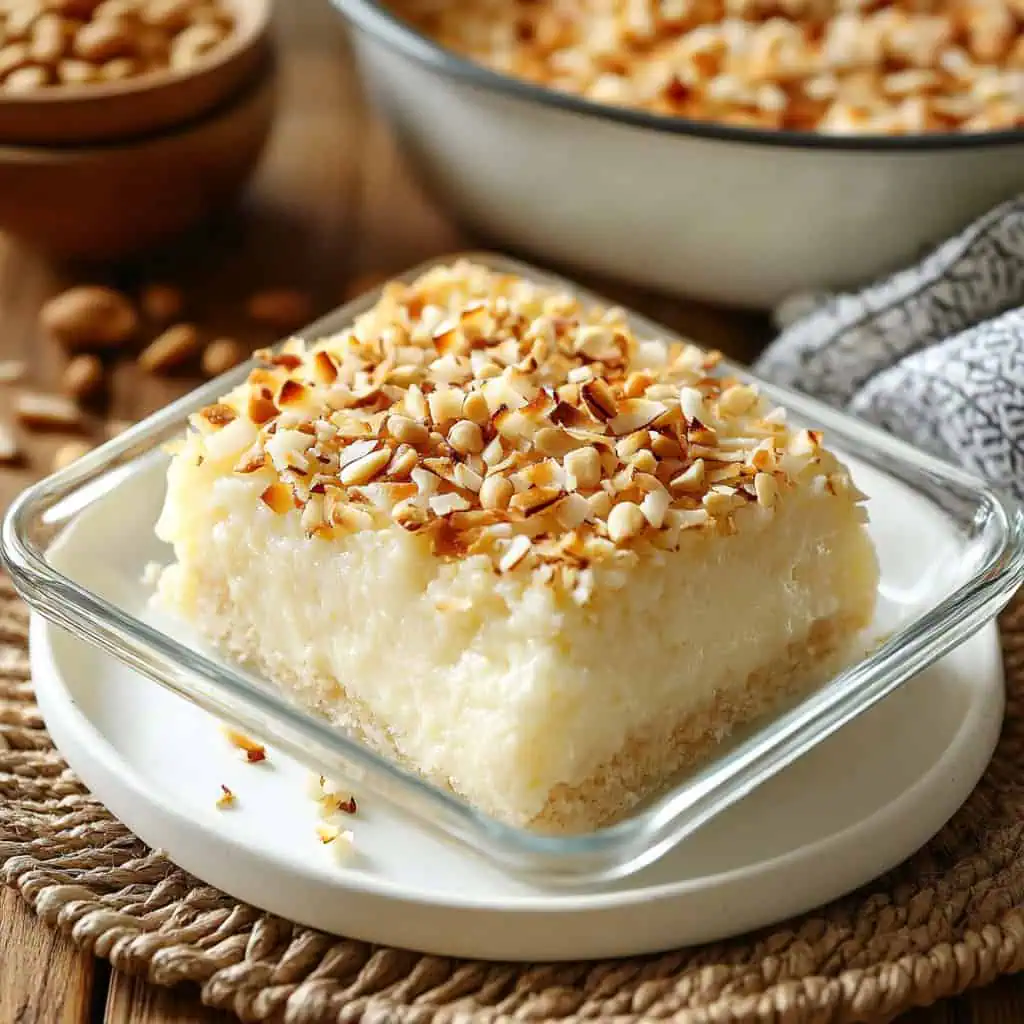
Why You'll Love This Recipe
This maja blanca recipe creates the perfect balance of creamy coconut richness and sweet corn texture that melts in your mouth. It's incredibly easy to make with simple pantry ingredients, requires no special techniques, and always impresses guests at gatherings.
The silky smooth consistency combined with the delightful crunch of toasted coconut and peanuts makes every bite absolutely irresistible. Plus, it's naturally gluten-free and can be prepared ahead of time, making it perfect for busy hosts who want to serve something truly special.
Jump to:
Ingredients
- 4 cups coconut milk
- 1 can (14 oz) sweetened condensed milk
- 1 can (15 oz) cream-style sweet corn
- ¾ cup fresh milk
- ¾ cup cornstarch
- ¾ cup granulated sugar
- ¼ cup grated coconut, toasted
- ¼ cup crushed peanuts (optional)
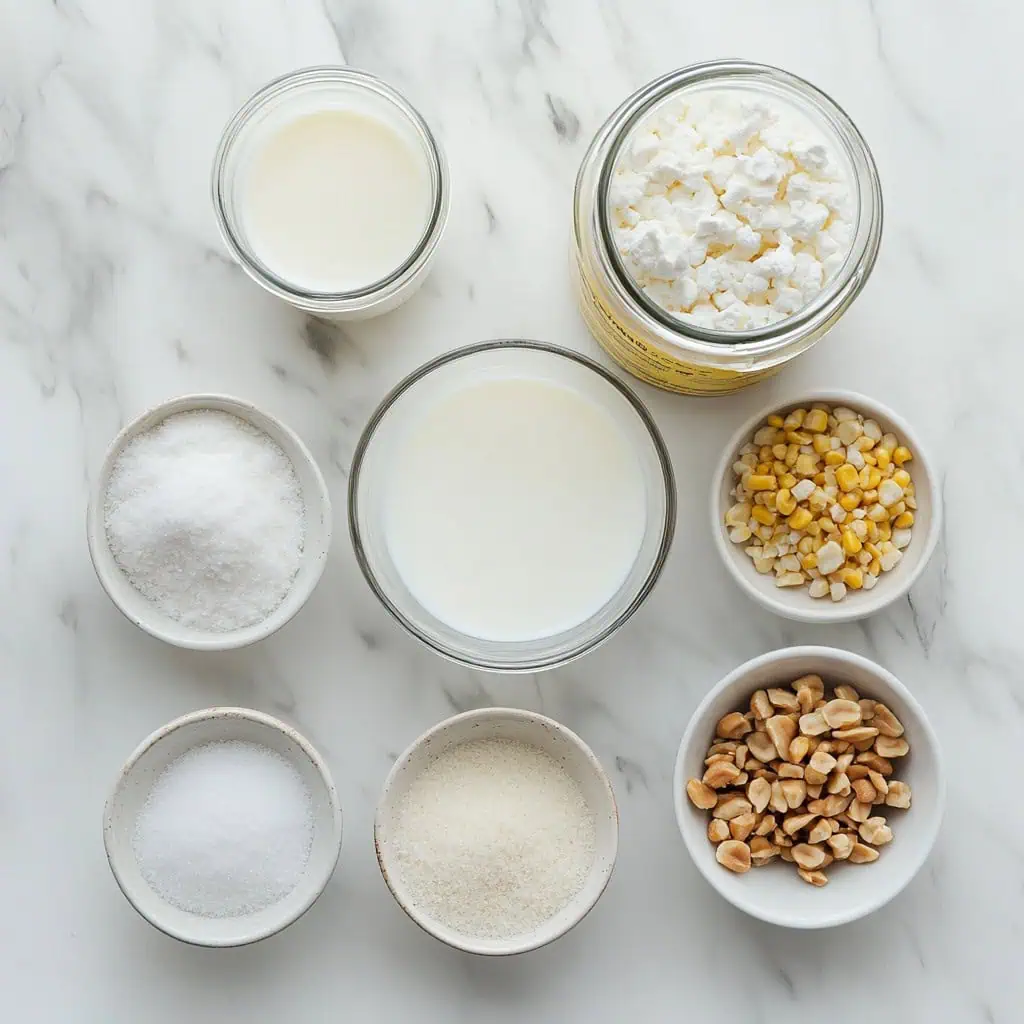
The coconut milk provides the signature tropical flavor and creamy base, while condensed milk adds sweetness and richness. Cream-style corn gives delightful texture and natural sweetness that complements the coconut perfectly.
Fresh milk and cornstarch create the perfect thickening agent for that silky pudding consistency, and the toasted coconut and peanuts add essential textural contrast.
Equipment
- Large heavy-bottomed pot - Prevents scorching and ensures even heat distribution
- Whisk - Essential for eliminating lumps in the cornstarch mixture
- Mixing bowl - For combining milk and cornstarch smoothly
- Wooden spoon or silicone spatula - For continuous stirring without scratching
- 9x13 inch glass baking dish - Perfect size for setting and serving
- Fine-mesh strainer - Optional, for ultra-smooth texture
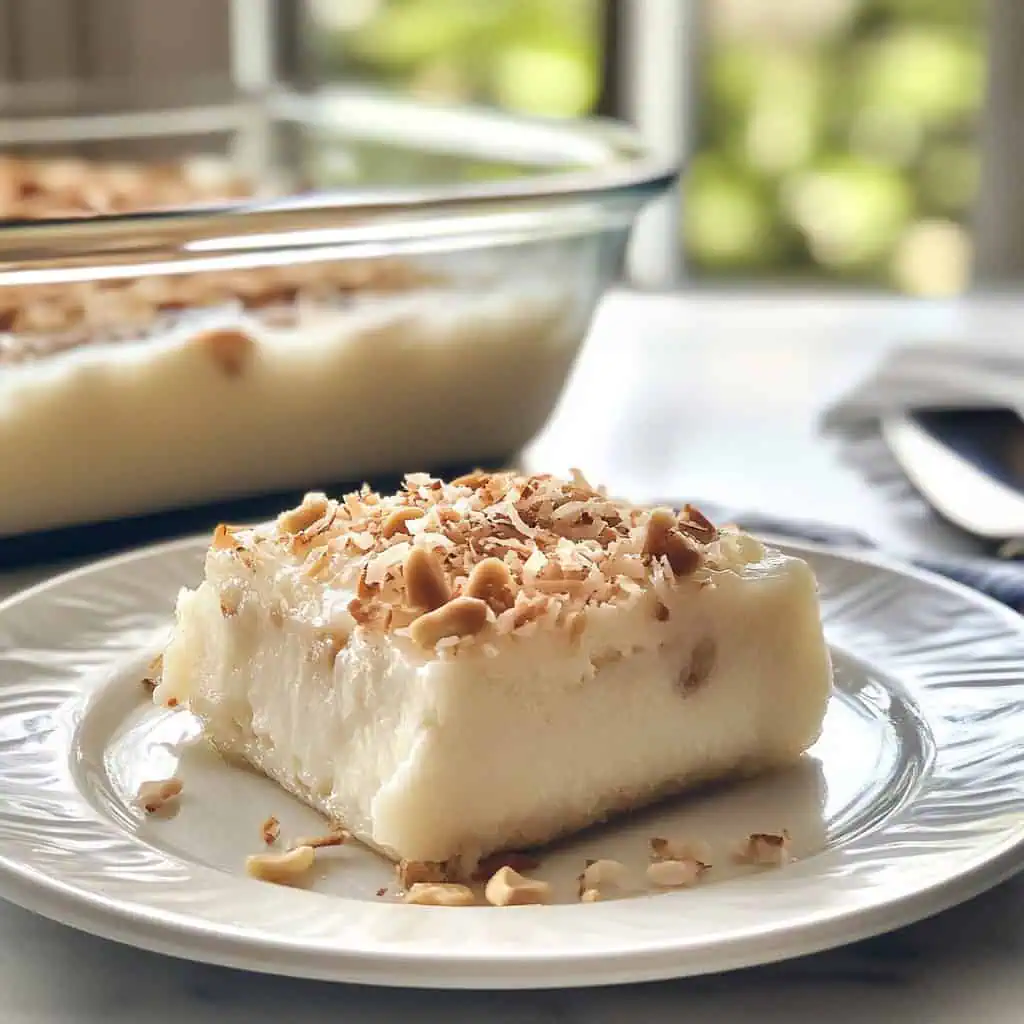
How To Make
- Pour the coconut milk into your large heavy-bottomed pot and bring it to a gentle boil over medium heat, stirring occasionally to prevent skin formation on top.
- Add the granulated sugar and sweetened condensed milk to the boiling coconut milk, stirring constantly until both ingredients are completely dissolved and evenly distributed throughout the mixture.
- Reduce heat to medium-low and let the mixture simmer for 10 minutes, stirring occasionally to prevent sticking and ensure even cooking.
- While the mixture simmers, combine the fresh milk and cornstarch in a separate bowl, whisking vigorously until the cornstarch is completely dissolved with no lumps remaining.
- Slowly pour the cornstarch mixture into the pot while stirring continuously, then immediately add the cream-style corn and mix thoroughly.
- Reduce heat to low and begin stirring constantly in a figure-eight motion, scraping the bottom and sides of the pot to prevent burning.
- Continue cooking and stirring for 10-15 minutes until the mixture thickens to a pudding-like consistency that coats the back of your spoon.
- Remove from heat and immediately pour the mixture into your prepared glass baking dish, using a spatula to spread evenly and smooth the top surface.
- Allow the maja blanca to cool completely at room temperature for about 30 minutes before covering with plastic wrap.
- Refrigerate for at least 1 hour or until completely set and chilled through.
- Just before serving, sprinkle the toasted grated coconut and crushed peanuts evenly over the top.
- Cut into squares and serve chilled or at room temperature according to your preference.

Tips from Lola's Kitchen
- Stir constantly once you add the cornstarch mixture to prevent lumps from forming
- Use full-fat coconut milk for the richest, creamiest texture
- Toast your own coconut flakes in a dry pan for the freshest flavor
- Test doneness by coating a spoon - it should hold its shape when you draw a line through it
- Line your dish with parchment paper for easy removal and clean presentation
- Make this dessert a day ahead for the best texture and flavor development
Substitutions
- Replace fresh milk with evaporated milk for extra richness
- Use coconut cream instead of coconut milk for an even more intense coconut flavor
- Substitute regular corn kernels if cream-style corn isn't available
- Try cashews or almonds instead of peanuts for different nutty flavors
- Use brown sugar instead of white sugar for deeper caramel notes
- Add a pinch of salt to enhance all the flavors
Troubleshooting
- If lumps form, strain the mixture through a fine-mesh sieve while still warm
- Mixture too thin? Cook longer while stirring until it reaches proper consistency
- Too thick? Add a little more coconut milk and stir until smooth
- Burnt bottom? Transfer to a clean pot immediately and don't scrape the burnt bits
- Not setting? Ensure you cooked it long enough and used enough cornstarch
- Grainy texture? Make sure cornstarch was completely dissolved before adding
Storage & Reheating
- Store covered in refrigerator for up to 5 days
- Can be frozen for up to 3 months, though texture may change slightly
- Serve directly from refrigerator or let come to room temperature for 30 minutes
- Do not reheat as it will break down the texture
- Add fresh toppings just before serving to maintain crunch
- Cut only what you'll serve to keep remaining portions fresh
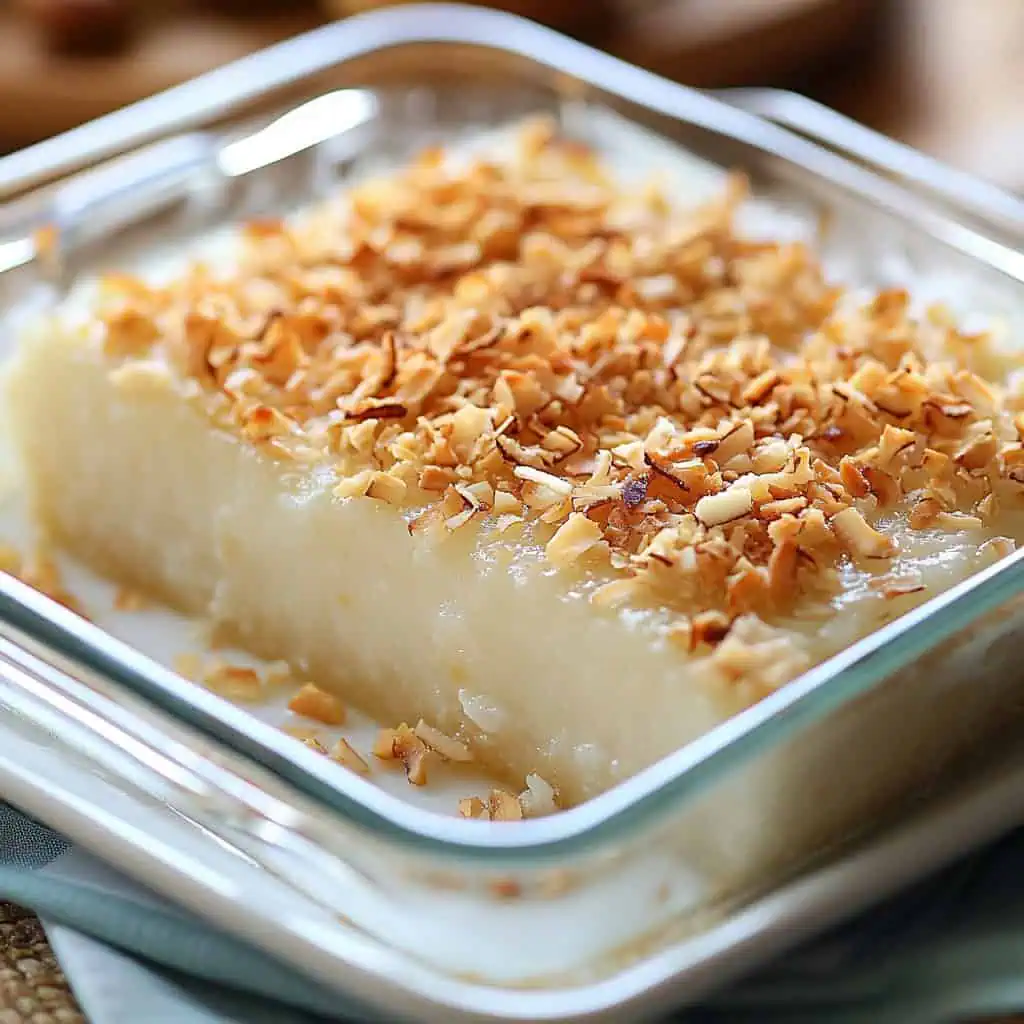
FAQ
Can I use light coconut milk?
Yes, but the result will be less rich and creamy
How do I know when it's thick enough?
It should coat a spoon and hold its shape when stirred
Can I make this dairy-free?
Replace fresh milk with additional coconut milk
Why is my maja blanca not setting?
You may need to cook it longer or use more cornstarch
Can I add other flavors?
Try pandan extract, vanilla, or ube for variations
How far ahead can I make this?
Best made 1-2 days ahead for optimal texture and flavor
Related
Looking for other recipes like this? Try these:
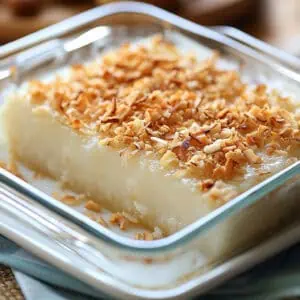
Maja Blanca Recipe: Creamy Filipino Coconut Pudding
Ingredients
- 4 cups coconut milk
- 1 can 14 oz sweetened condensed milk
- 1 can 15 oz cream-style sweet corn
- ¾ cup fresh milk
- ¾ cup cornstarch
- ¾ cup granulated sugar
- ¼ cup grated coconut toasted
- ¼ cup crushed peanuts optional
Instructions
- Pour the coconut milk into your large heavy-bottomed pot and bring it to a gentle boil over medium heat, stirring occasionally to prevent skin formation on top.
- Add the granulated sugar and sweetened condensed milk to the boiling coconut milk, stirring constantly until both ingredients are completely dissolved and evenly distributed throughout the mixture.
- Reduce heat to medium-low and let the mixture simmer for 10 minutes, stirring occasionally to prevent sticking and ensure even cooking.
- While the mixture simmers, combine the fresh milk and cornstarch in a separate bowl, whisking vigorously until the cornstarch is completely dissolved with no lumps remaining.
- Slowly pour the cornstarch mixture into the pot while stirring continuously, then immediately add the cream-style corn and mix thoroughly.
- Reduce heat to low and begin stirring constantly in a figure-eight motion, scraping the bottom and sides of the pot to prevent burning.
- Continue cooking and stirring for 10-15 minutes until the mixture thickens to a pudding-like consistency that coats the back of your spoon.
- Remove from heat and immediately pour the mixture into your prepared glass baking dish, using a spatula to spread evenly and smooth the top surface.
- Allow the maja blanca to cool completely at room temperature for about 30 minutes before covering with plastic wrap.
- Refrigerate for at least 1 hour or until completely set and chilled through.
- Just before serving, sprinkle the toasted grated coconut and crushed peanuts evenly over the top.
- Cut into squares and serve chilled or at room temperature according to your preference.
Tips from Lola's Kitchen
- Stir constantly once you add the cornstarch mixture to prevent lumps from forming
- Use full-fat coconut milk for the richest, creamiest texture
- Toast your own coconut flakes in a dry pan for the freshest flavor
- Test doneness by coating a spoon - it should hold its shape when you draw a line through it
- Line your dish with parchment paper for easy removal and clean presentation
- Make this dessert a day ahead for the best texture and flavor development
The Story Behind Maja Blanca
Maja blanca has deep roots in Filipino culinary tradition, though its exact origins tell a fascinating story of cultural fusion. The dessert's name comes from "maja," which refers to a type of Spanish pudding, but Filipino cooks transformed this concept entirely by incorporating local ingredients like coconut milk and corn. This adaptation reflects the beautiful way Filipino cuisine evolved during centuries of Spanish colonial influence, blending European techniques with indigenous tropical flavors.
The addition of sweet corn to maja blanca is uniquely Filipino and sets it apart from similar coconut desserts found throughout Southeast Asia. Corn became widely cultivated in the Philippines during the American colonial period, and resourceful Filipino home cooks discovered that cream-style corn added both sweetness and delightful texture to their coconut puddings. This innovation made maja blanca more filling and nutritious, transforming it from a simple dessert into something that could satisfy hunger as well as sweet cravings.
What makes maja blanca truly special is its role in Filipino celebrations and family gatherings. Unlike elaborate cakes or complex desserts, maja blanca represents the heart of Filipino hospitality - generous, accessible, and made with love. Every Filipino family seems to have their own version passed down through generations, with small variations in sweetness, thickness, or toppings that make each recipe unique. The dessert's creamy white appearance also makes it symbolic of purity and new beginnings, which is why it's often served at baptisms, birthdays, and holiday celebrations.
Today, maja blanca remains one of the most popular Filipino desserts both in the Philippines and among Filipino communities worldwide. Its simple ingredients and straightforward preparation method make it perfect for home cooks who want to share a taste of authentic Filipino culture with their families and friends.
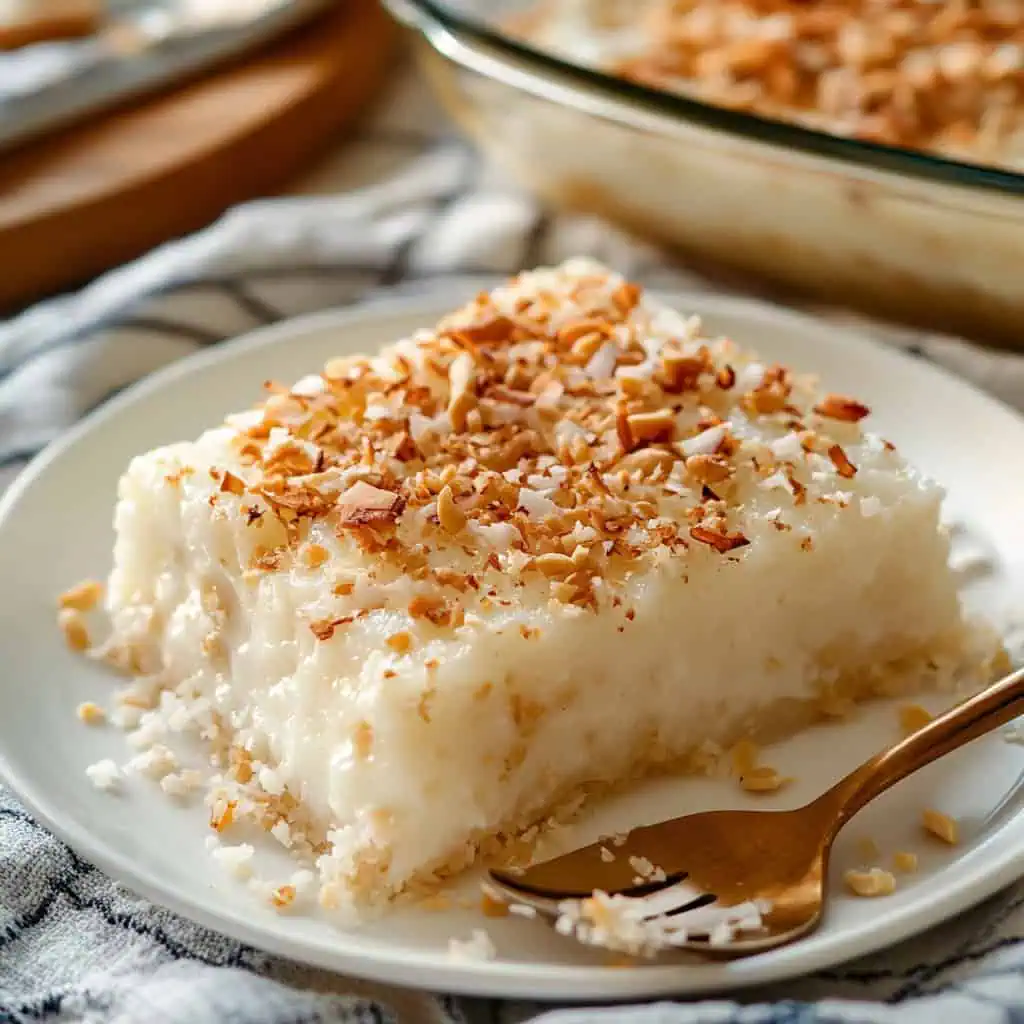


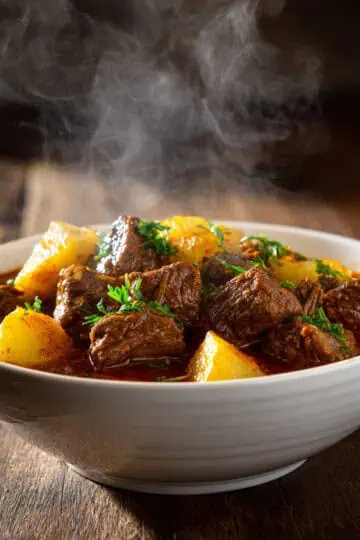


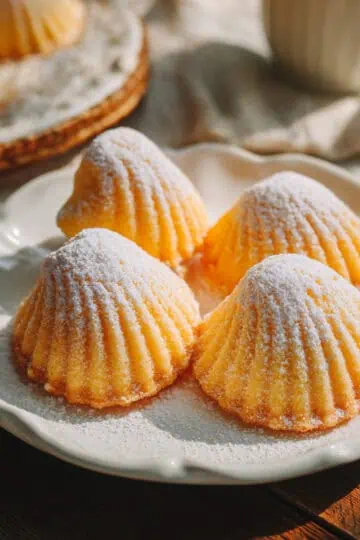
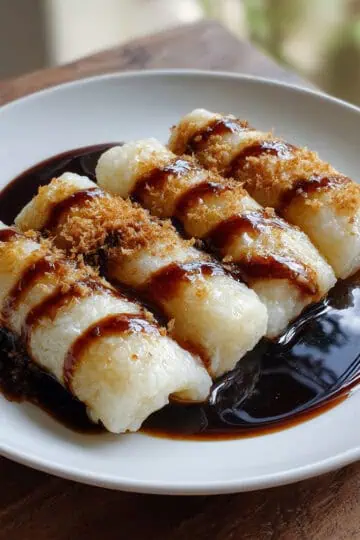
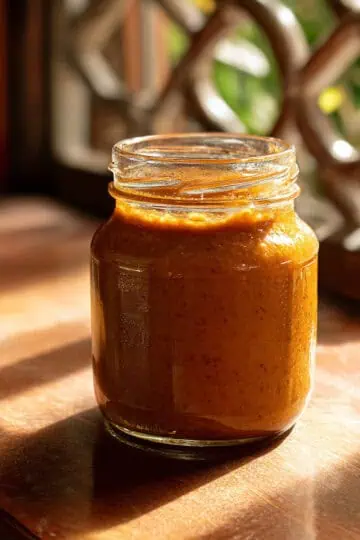
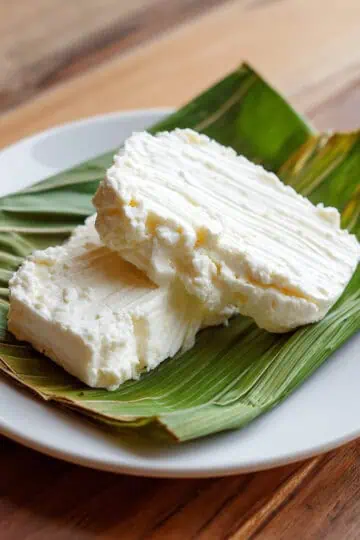
Comments
No Comments